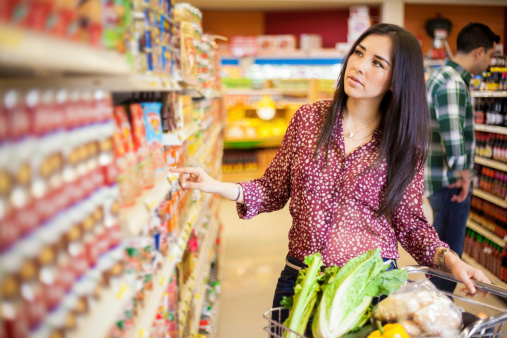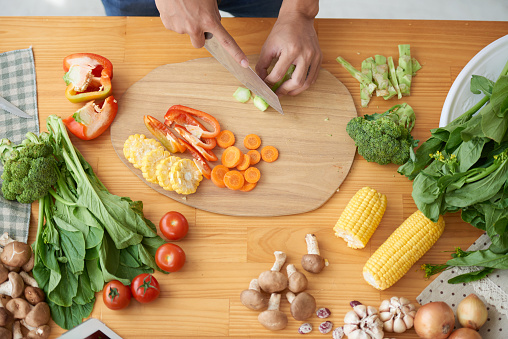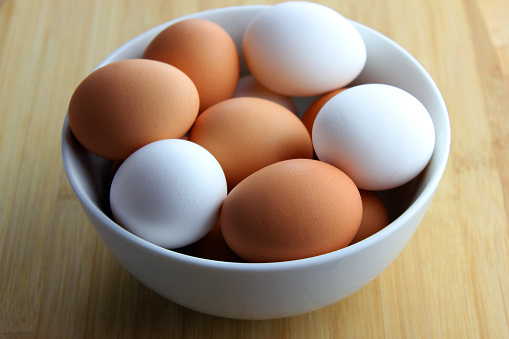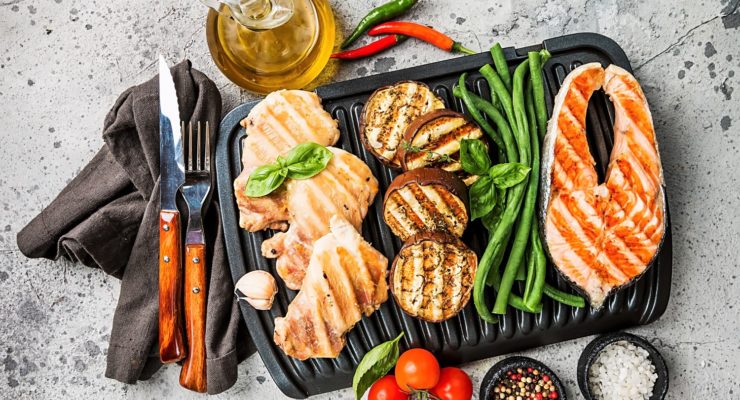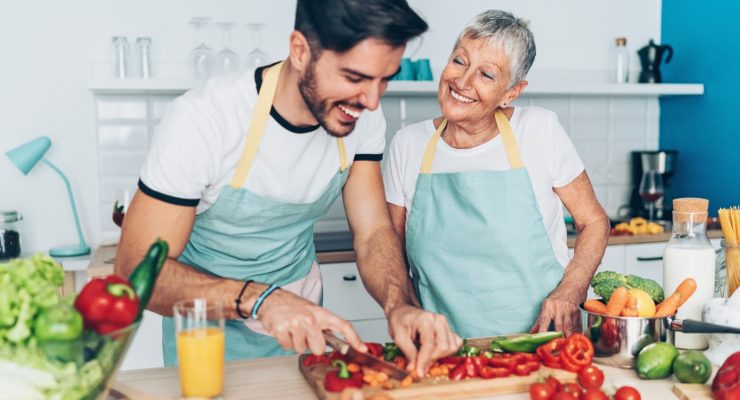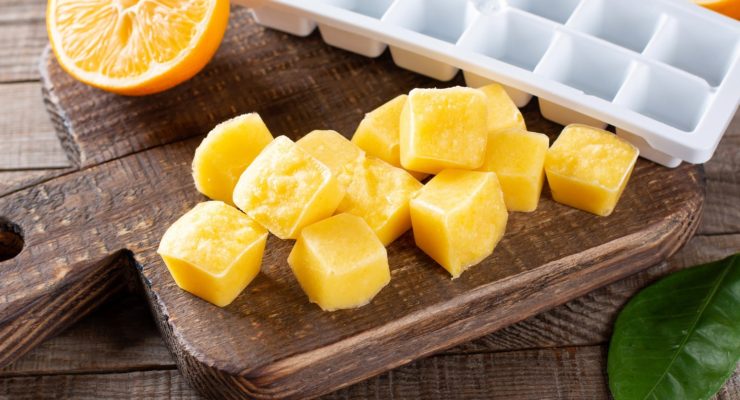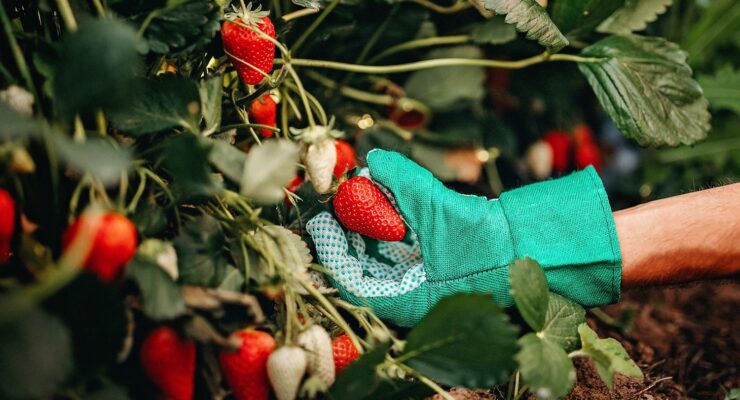10 Sneaky Ways Supermarkets Get You to Spend (& Eat!) More
Article posted in: Lifestyle
Recall your last trip to the supermarket. Could you smell the chickens roasting and the cinnamon rolls baking? Did you notice the flowers near the front of the store and start your grocery journey in the brightly colored produce section? All the while pushing your great big grocery cart?
You probably never gave any of those things a moment’s thought. But they’re all well-studied supermarket mind tricks to get you to buy more, says brand expert and consultant Martin Lindstrom in his books, Buyology—Truth and Lies About Why We Buy, and Brandology—Tricks Companies Use to Manipulate Our Minds and Persuade Us To Buy. Lindstrom is also a columnist for Harvard Business Review, Time and Fast Company.
If you’ve ever left the store with waaay more items than you went in for, you were suckered by supermarket psychology. And it could be making you fat, particularly if you succumb to the store’s more sensual seductions. (Let’s face it, it’s hard to resist fresh-baked cinnamon rolls.)
Here are a 10 ways your supermarket is trying to get you to buy—and eat—more:
1. That cart.
It’s huge. According to Slate.com, the size of shopping carts have tripled since they were invented in 1938. And they were invented because having a cart, as opposed to a basket, encourages you to buy more. Lindstrom reported that in one experiment, when a shopping cart was doubled in size, consumers bought 40 percent more. One shopping cart maker touts its cart to grocers as “a new way to increase your bottom line with more sales.” And a European study in The Journal of Marketing Research found that people were more likely to buy unhealthy items. Not good for your pocketbook or your waist line.
2. The bad stuff is within easy reach.
Another reason people with shopping carts—or even baskets—are more likely to buy unhealthy food is that the bad stuff is within easy reach. It’s placed on shelves or racks that are easy to get to. Oddly enough, the researchers found, it was how much a shopper had to flex his or her arm—by reaching and bending—that deterred them from buying healthier food and drew them to the bad stuff.
3. The good stuff, bulk items and generics are harder to get to.
In many groceries, the generics and bulk products are on the bottom shelves. You practically have to kneel down to reach them. Yet many of them are just as good as the name brands (in fact, some are produced by name brand companies) and they’re cheaper. It’s even more nefarious: Items that appeal to kids, like sugary cereals, are shelved at kids’ eye level, leading brands are at adult eye level on the middle shelf, and smaller or gourmet items are on the top shelf.
4. They hide the staples.
Where are the milk and eggs? Where are they hiding the meat and fish? Usually, in the back of the store, which means you often have to travel through aisles and aisles of snacks, sodas and cookies to get to the real food.
5. Produce colors make you buy more.
This could be a good thing if the brightly colored fruits and vegetables make you load up your cart with them. The problem is, researchers say, that happy feeling you get by wheeling through what looks like a farm stand also makes you buy more in the rest of the store, including things you may not want or need.
6. There’s nothing special about the end caps.
When you see a stack of products at the end of an aisle, it’s natural to assume that they’re on “special.” They may not be. According to Paco Underhill, an environmental psychologist and author of What Women Want: The Science of Female Shopping, products on these “end caps” are usually there because the manufacturer paid extra to have them placed there.
7. Reusable shopping bags—good for the environment, bad for you.
You’d think reusable bags would make you more health conscious, and they do. But a study by Duke University’s Fuqua School of Business found that it may also encourage you to buy more indulgent foods, like ice cream. They studied receipts from a California supermarket between 2005 and 2007. They looked at two million of them, in fact. Loyalty cards indicated when the shoppers used their own bags and when they didn’t. They found that shoppers who brought their own bags were, yes, more likely to buy organic products. But they also were more likely to pick up ice cream, cakes, candy, cookies and chips.
8. Free samples.
When was the last time someone in the grocery store handed you a sample of, say, a tangerine? Nope. You’re going to get cheese or mac and cheese or chips or some processed food with an ingredients list of unpronounceable chemical names.
9. Too many options.
The average supermarket has about 64,000 products. Your brain may not be able to deal with all those decisions, say supermarket designers, so you throw up your hands and grab something that’s familiar—which, if you’re trying to lose weight, could be a high-calorie mistake—or something that looks easy, like a rotisserie chicken or pre-made meals from the deli.
10. Crowded aisle.
Ever wonder why markets stack boxes of items in already narrow aisles? Think, traffic jam, which may encourage you to scan the shelves until the way is clear—and grab something on impulse, according to Notre Dame College.
So, now that you know, what do you do? Here’s what experts recommend:
- Make a list and stick to it.
- Shop around the perimeter of the store where the fresh produce, milk, dairy, fish and meats are placed. That’s most of what you need to make fresh healthy meals. Be aware that supermarkets are on to this trick and now place treats around the perimeter as well to sabotage you. Don’t fall for it.
- Read labels. You’ll be less likely to buy something filled with sugar, fat and chemicals if you read every label before you put an item in your cart.
- Only buy perishables you know you’re going to eat. Forty percent of the food Americans buy goes uneaten, says the Natural Resources Defense Council (NRDC). We toss out the equivalent of $165 billion dollars worth of food every year, the NRDC estimates.
- Buy frozen foods. Studies have found that many are as healthy as or even healthier than fresh.
- Check prices. Don’t be fooled by product placement in the store. Just because something is stacked up to look like a special doesn’t mean it really is.

